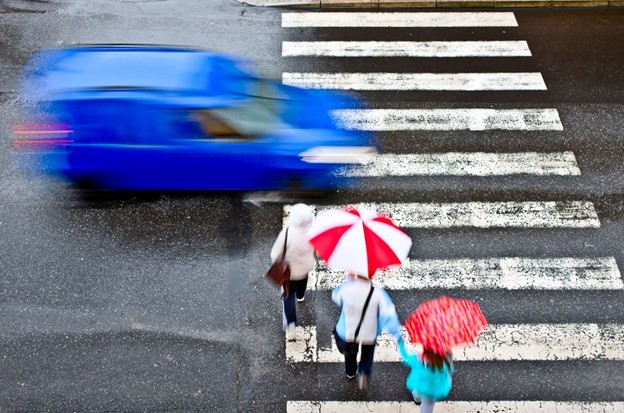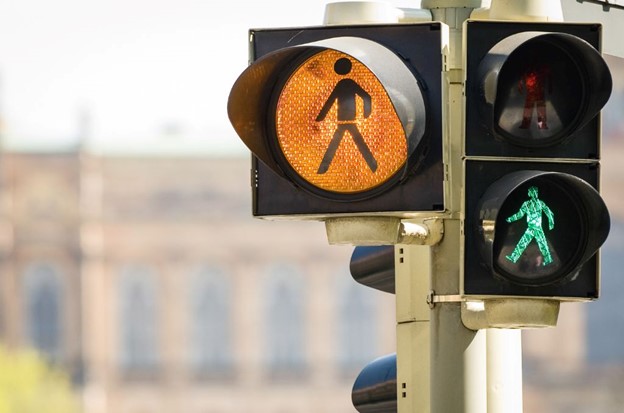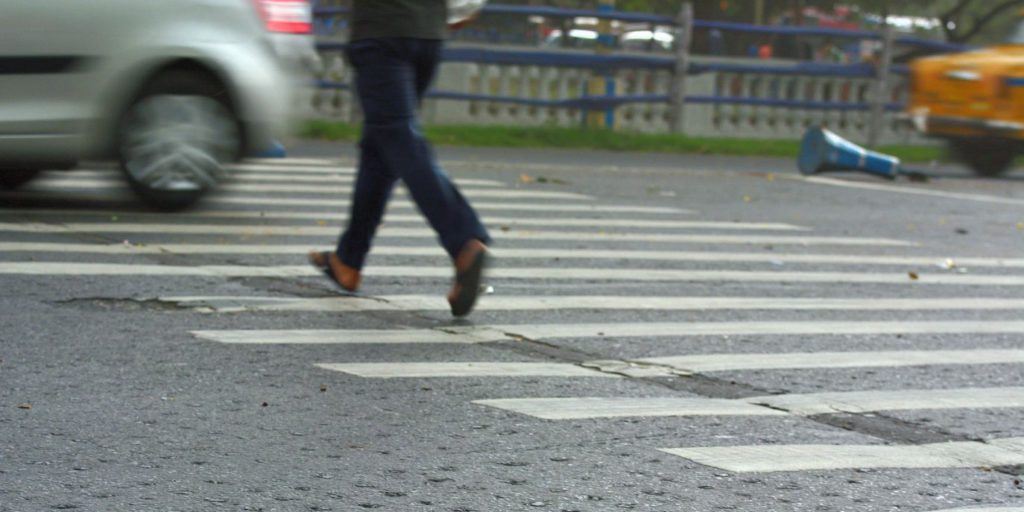October is not just for sweaters, football, and all things pumpkin, but it is also Pedestrian Safety Month. According to the National Highway Traffic Safety Administration (NHTSA), “In 2021, 7,388 pedestrians were killed – a 13% increase from 2020 – and more than 60,000 pedestrians were injured nationwide.”
Whether you’re a daily walker, just someone who occasionally strolls around town, or a driver who wants to be more informed about pedestrian safety, this month is about providing awareness and tips that make our roads safer for everyone.
Driver Safety Tips

As drivers, we are responsible for not only keeping our eyes on the road but also being aware of our surroundings. This is especially true in areas where there is pedestrian activity. Let’s review some tips:
- Avoid distracted driving- looking down to adjust the volume on your radio or checking a phone alert can be all it takes to miss someone crossing the road.
- Be extra cautious in the dark- pedestrians can be more difficult to see when it is dark outside. It is never a bad idea to slow down a little extra at night, especially in areas with heavier pedestrian activity.
- Respect speed limit signs and pay attention to pedestrian crossing signs– following the appropriate speed and cautionary signage can help ensure the safety of drivers and walkers alike.
- Always yield to pedestrians in the crosswalk- it is important to stop for people crossing in the crosswalk. It’s also important to note that you should never pass other stopped cars in crosswalk areas.
Pedestrian Safety Tips

Like those behind the wheel, pedestrians also play an important role in maintaining safety in crosswalk areas. Here are a few helpful reminders:
- Prepare a safe walking route ahead of time. If you are familiar with the area, try to plan out your route beforehand. This will allow you the opportunity to choose roads and areas that are safer for walkers. Try to choose routes with sidewalks and crosswalks, and try to avoid busy roads that don’t have these.
- Use sidewalks when available. This may seem like a common sense tip, but oftentimes, people fail to use available sidewalks, putting them in more danger where vehicle activity may be heavier and faster.
- Follow designated traffic signs and signals. It’s crucial to obey proper pedestrian signs and signals. Only cross when the signal allows it to avoid a possible collision with a vehicle.
- Walk facing traffic if sidewalks are not present. If there are no sidewalks on your path, or if they cannot be used, facing traffic can help greatly decrease the chances of a pedestrian accident simply because pedestrians have time to react to a distracted driver, wayward car, etc.
- Think about your wardrobe. Wearing bright colors during the day can help you be more visible to drivers. If you plan to be out at night, make sure you aren’t choosing dark-colored clothing, and consider incorporating a reflective jacket or hat.
- Only cross at designated spots. You should only cross the road when there is a designated crosswalk to do so. Walking out in the middle of the street can be dangerous if drivers aren’t expecting pedestrians to be in the roadway. Look for pedestrian crossing signs to identify the safest area to cross a road.
Pedestrian and driver safety are obviously intertwined, forming the foundation of a shared and secure road environment. By fostering greater awareness, mutual respect, and adherence to traffic rules, we can all play a part in reducing accidents and saving lives. Remember, every cautious step a pedestrian takes, and every responsible decision a driver makes contributes to the shared goal of safer roads for everyone.

